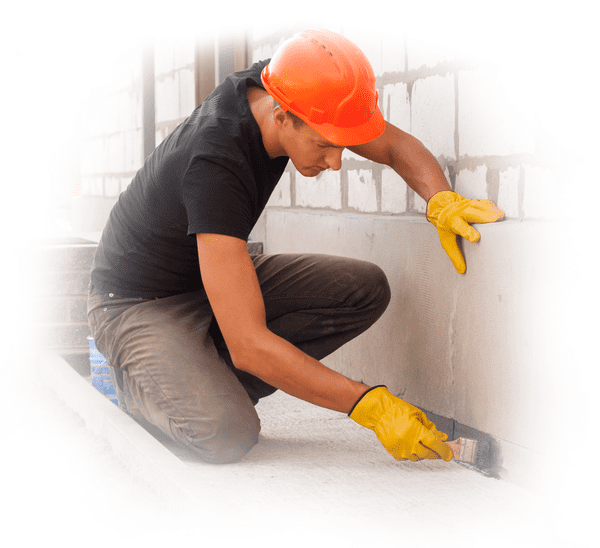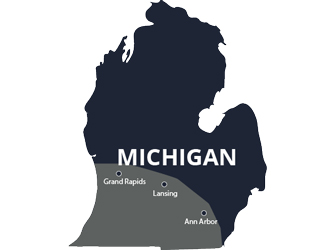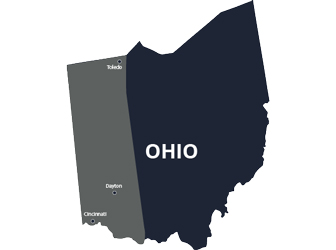Originally posted 3/15/19, revised 11/19/21
Your garage floor is going to crack. How could it not? It endures heavy wear and tear, usually over the same areas repeatedly. And even inside a building, it still endures some pretty substantial temperature fluctuations, plus the natural erosion or water damage caused by rainfall.
If cracks are inevitable, you may wonder if the concrete is worth fixing. And that’s an excellent question! In this article, we’re going to discuss what types of cracks are more ‘cosmetic,’ and which ones indicate actual damage that needs repair.
Acculevel is a family-owned and operated company based out of Rossville, Indiana. Since our start in 1996, we’ve helped more than 35,000 homeowners preserve and protect their homes. We specialize in foundation repairs and waterproofing, and have more than 25 years of experience with concrete slab leveling and lifting.
What Causes Your Garage Floor to Crack?
There are a few different culprits who could be responsible for the fissures developing in your floor.
Temperature Changes Can Be a Problem
One of the main causes of floor cracks is the temperature fluctuations. Concrete isn’t a flexible material, but it is porous. This means water, moisture, or humidity can seep into the concrete. Even if it only has just a hint of moisture in it, that can be enough to cause it to expand and contract with seasonal changes. Since it’s not flexible, these small shifts create cracks.
These cracks are usually thin, and don’t cause the surface to be uneven. While they’re unsightly, if a crack isn’t large enough to create a trip hazard, it doesn’t need major repairs.
Lack of Soil Compaction
To explain this, we need to talk about how your garage was built. In many cases, the garage foundation and walls were built first, and the floor was poured afterwards. This makes your garage floor a “floating slab,” meaning that it’s not part of the garage’s foundation, only the floor.
Before the slab can be poured, builders have to prepare the site. This means gravel, sand, soil, or a combination of these is spread out and compacted. (Compacted = pressing until firm and level.) If compaction is not done thoroughly, or is uneven, this ground layer will shift or settle, creating gaps below the floor.
Once there are gaps under the slab, it can develop cracks. It doesn’t matter if the gaps are created by poor compaction or erosion…
Erosion Can Cause Cracks and More
Erosion is another major cause of garage floor cracks. When rainwater erodes the ground below the garage, it creates gaps that undermine the strength of the floor. Then, when you drive over it, the concrete doesn’t have the support it needs and cracks under the pressure.
These cracks are more significant, because concrete can start to settle (sink) into the gap below. This will make your garage floor uneven, and can only get worse over time.

This photo was taken by an Acculevel project advisor during an in-home assessment. A long crack has formed across the garage floor.
You should have these cracks repaired and the floor lifted/leveled to minimize the damage done to your garage. Leaving these issues untreated will eventually impact the functionality of your garage floor.
Settling Can Happen Along the Outside, Also
Erosion can cause problems around the perimeter of the garage, too. You may notice that your garage floor is beginning to slope towards the outside wall, or you may be able to see settling cracks on the outside of the garage.
This is most common in garages where the floor and garage foundation are all one piece; the entire base of the garage was poured, then the walls built on top of it.
This settling causes cracks because as the wall sinks, it strains the concrete. We mentioned earlier that concrete isn’t flexible- so when the outside pulls on the floor, it will eventually crack under the pressure.

This photo was also taken by an Acculevel project advisor. The long zigzag crack is a distinctive sign that the garage is settling towards the outside.
You need to have a settling garage foundation repaired, because it is going to continue to shift. It can eventually de-stabilize the structure until it’s not safe for you to use.
How Do You Repair a Garage Floor?
There are two repair methods for repairing a cracked garage floor: slabjacking and helical piers. In some circumstances, you may actually need both.
How Does Slabjacking Work?
Slabjacking is a concrete leveling method. It’s similar to mudjacking; you drill small holes in the concrete and inject a filler material underneath the slab. However, slabjacking uses a polyurethane foam that is lightweight, sets up almost immediately, and is ideal for filling voids beneath concrete slabs.
How Do Helical Piers Work?
Helical piers are long steel posts with screw-style blades, which allow them to be driven deep into the ground. Once they reach stable, undisturbed soil, they can be attached to the garage foundation. This will stabilize the garage, keep it from sinking any deeper, and in some cases, lift it back up.

This is an illustration of helical piers being used to stabilize a house foundation.
If the perimeter foundation is successfully lifted back into place, the repair may create a void under the garage floor. We would suggest using slabjacking as a method for void fill, so that the entire garage is on a level, solid surface. Under these circumstances, slabjacking is actually preventative maintenance.
Why Would You Need Both Repair Methods?
If there is significant erosion underneath your garage, it may be necessary for you to have both slabjacking and piers. We discussed how a garage foundation may be all one piece; but this isn’t always the case. Builders often construct the foundation and walls of the garage, then pour the floor afterwards. (This is how most basements are constructed.) This results in what is sometimes called a “floating slab.”
This matters because if erosion has caused problems around the perimeter, piers will only stabilize the outside wall. The erosion under the floor isn’t addressed, so the floor will continue to slope or sink. Slabjacking is then needed to level the floor separately from the foundation.
Want to Know More?
You can learn more about repair options in these other articles:
We explore garage repair options- including underground garages- in this blog.
Not sure if slabjacking is the right choice for you? We have an illustrated guide that demonstrates when slabjacking will not be effective.
Want to know more about piers? We explain why we recommend helical piers (instead of push piers) for residential use.
Do You Need Your Garage Assessed by a Professional?
If you have cracks in your garage floor, or on the exterior of the garage, you’ll need to work with a foundation expert. You can call Acculevel at 866-669-3349, or fill out our online contact form. We’ll schedule an appointment for you with one of our knowledgeable and experienced project advisors. They will discuss your concerns, evaluate your garage, and help you determine the best solution.
If you don’t live in Indiana or the surrounding areas (you can check our service area here!), you will want to be sure the contractor you work with is properly insured and accredited by the Better Business Bureau. It is essential that you only use a qualified and experienced contractor for any repairs that require piers. If these are installed poorly- or in the wrong location- you could be spending money without resolving the structural problems.



















